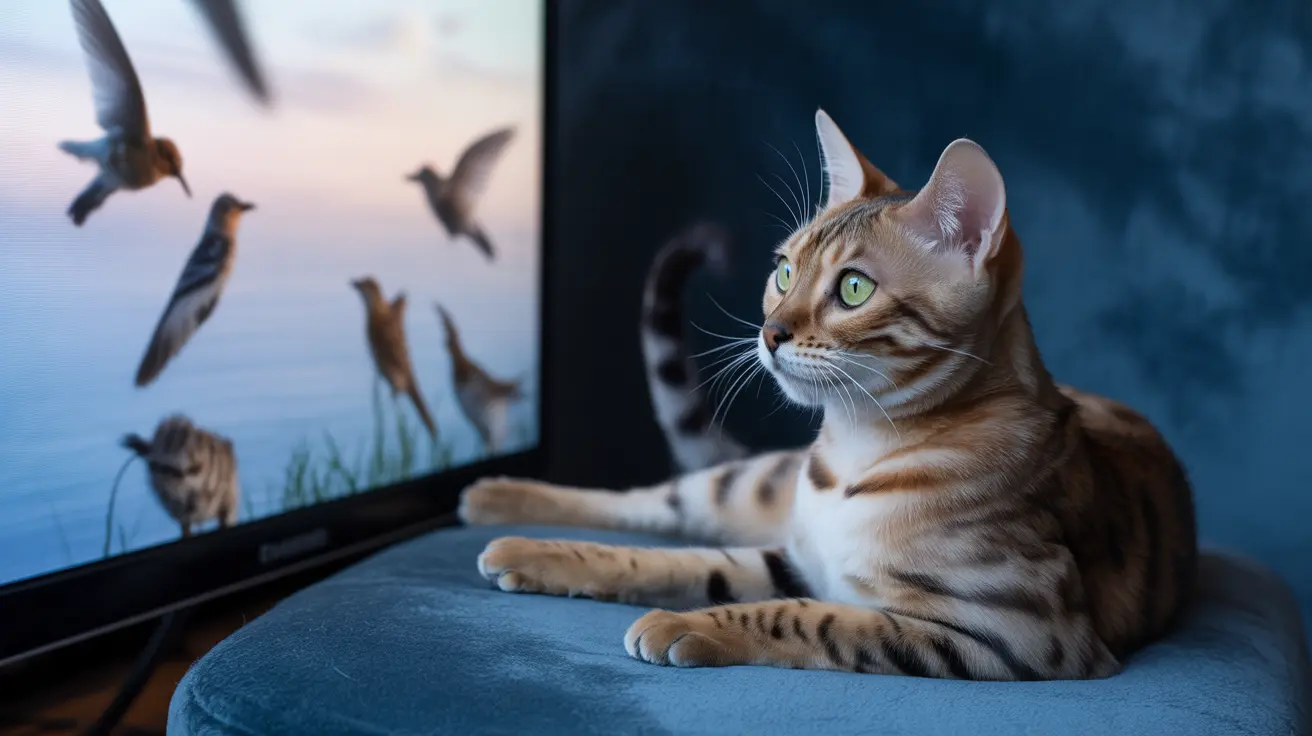How Cats Process Television Images
Unlike humans, cats have evolved with specialized vision optimized for hunting. Their eyes process images up to six times faster than human eyes, meaning they need higher refresh rates to perceive smooth motion. Modern TVs with refresh rates above 100Hz are much better suited for feline viewing compared to older technology.
Cats are trichromatic, meaning they can see three colors, but their color perception is more muted than humans'. They excel at detecting motion and have superior night vision, thanks to having more rod cells than cone cells in their retinas.
What Attracts Cats to Television
Movement is the primary factor that draws cats to TV screens. Quick, erratic motions typical of small prey animals are particularly engaging. Nature documentaries featuring birds, rodents, or insects often capture feline attention most effectively.
Sound plays a crucial role too. Cats have incredibly sensitive hearing and can detect subtle audio cues that might escape human notice. The combination of movement and authentic animal sounds can trigger their natural hunting instincts.
The Science Behind Feline TV Viewing
Modern LED and OLED displays provide a much better viewing experience for cats compared to older CRT televisions. The higher refresh rates and clearer images allow cats to see fluid motion rather than flickering frames.
However, cats don't "watch TV" in the way humans do. They respond instinctively to stimuli that resemble prey or potential threats, rather than following plotlines or understanding content.
Safe TV Viewing for Cats
While television viewing is generally safe for cats, there are some considerations to keep in mind. Ensure your TV is properly mounted or stabilized to prevent accidents if your cat becomes too enthusiastic about "catching" on-screen prey.
Monitor your cat's behavior during TV time. Some cats may become overstimulated or anxious, while others might show healthy interest and engagement. Always provide an easy way for your cat to leave the viewing area if desired.
Using TV for Feline Enrichment
Television can serve as one component of an indoor enrichment strategy for cats. Short viewing sessions of cat-specific content, especially those featuring prey animals, can provide mental stimulation and entertainment.
However, TV should never replace active play, physical exercise, or real-world enrichment activities. Think of it as a supplement to an already engaging indoor environment rather than a primary source of entertainment.
Frequently Asked Questions
Can cats see and understand what is on the TV screen?
Cats can see TV images, especially on modern high-refresh-rate screens, but they don't understand the content as entertainment. Instead, they react instinctively to movement and sounds that trigger their natural hunting responses.
Why do some cats seem fascinated by moving images and sounds on TV?
Cats are attracted to quick movements and sounds that resemble prey animals. Their highly developed hunting instincts make them particularly responsive to small, fast-moving objects and nature-related sounds on TV.
What type of TV or screen is best for a cat's viewing experience?
Modern LED or OLED TVs with high refresh rates (100Hz or higher) provide the best viewing experience for cats. These screens can display smooth motion that cats can process more effectively than older technologies.
How does a cat's vision differ from humans when watching television?
Cats process images faster than humans and see colors less vibrantly. They're more sensitive to motion but may see TV images as less detailed and in a more muted color palette compared to human perception.
Is watching TV safe and beneficial for indoor cats as a form of enrichment?
Yes, TV viewing is safe for cats and can provide mental stimulation when used as part of a broader enrichment strategy. However, it should complement, not replace, physical activity and interactive play.
Conclusion
While cats can indeed see TV, their experience is uniquely feline, driven by instinct rather than entertainment value. Understanding how our cats perceive television can help us better use it as one tool in our arsenal for providing enriching indoor environments for our beloved pets.






